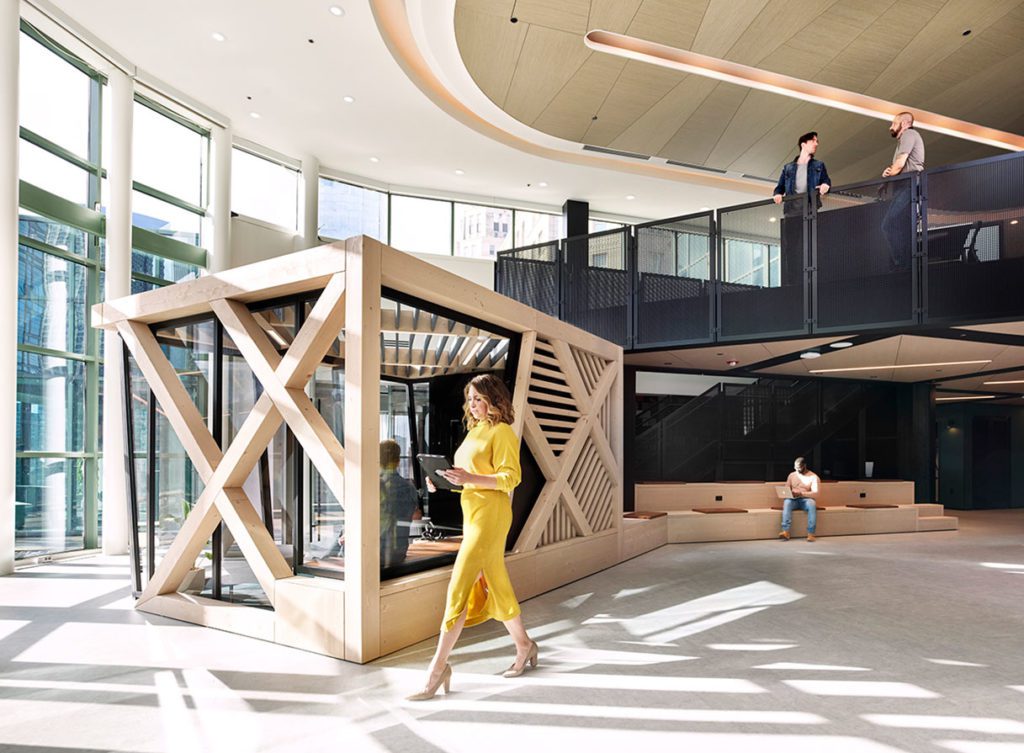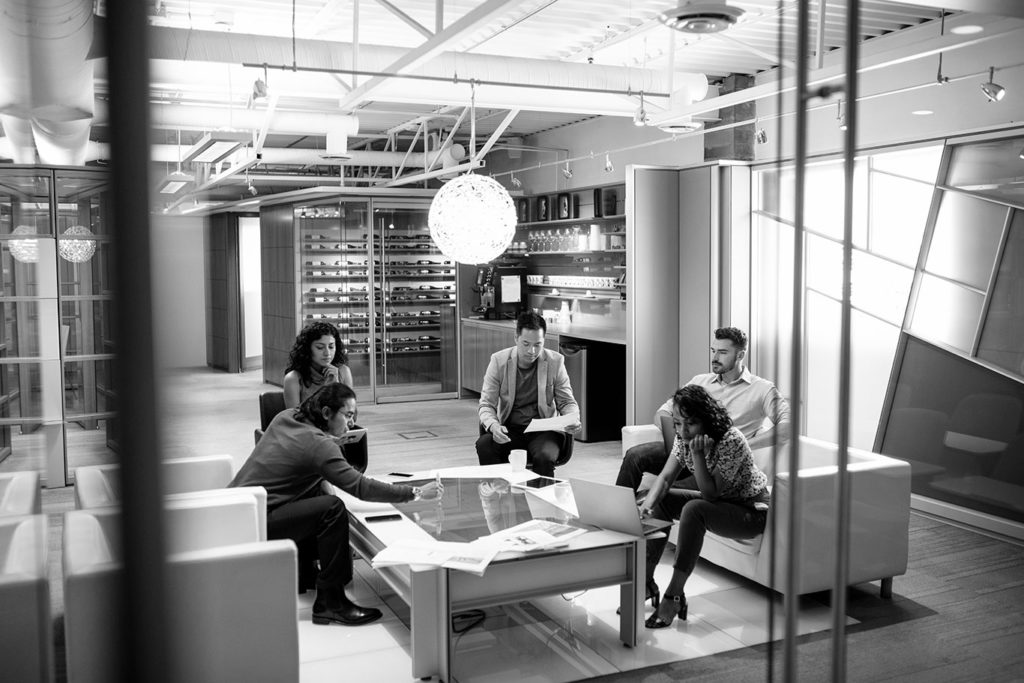09.01.21
Team-based spaces will drive innovation
DIRTT
Microsoft has built flexibility into its portfolio and is in a great position to support a hybrid work model — an approach that allows employees to work in the office and remotely. The company’s Real Estate and Security team (RE&S) has been a leader in this. For nearly a decade, Microsoft has provided what it calls “team-based space” for employees. The areas are set up to accommodate groups of about eight-to-12 employees with collaboration space, “focus rooms” for four or five employees to meet, and “concentration zones” for one or two people to meet or code.
“We optimize space for the employee at Microsoft,” says Michael Ford, Vice President of Global Real Estate and Security at Microsoft. “A lot of times, real estate teams just build a space, and then employees have to fit into that space. We want to build flexible space that adjusts to our employees’ needs.”
Ford underscores his point by talking about how the RE&S team creates space for employees to innovate and build software: It’s all about creating an environment where people can work together, talk, and interact.
“Employees have fewer meetings, or spend less time in meetings, and they are more productive with release schedules,” Ford says. “Employees are releasing products faster because of that interaction in the team-based space — you can overhear a conversation about a piece of code and that helps, instead of sitting in an individual office where you would never have heard that conversation to move things along.”

Using Prefabrication to Increase Flexibility
The RE&S team uses some prefabrication and modular construction to create agile workspaces across its real estate portfolio — everything from phone rooms and focus rooms to small meeting areas “to help support our team-based space workplace concepts,” Ford says.
This approach to building construction allows the company to quickly add more collaboration and concentration spaces to adapt to business and employee needs. Not only is it more adaptable, but a lot faster.
“Using prefabrication and modular elements has enabled Microsoft to build new spaces up to 30% faster, in some cases.”
– MICHEAL FORD
The RE&S team is not alone when it comes to noting speed as a benefit of using modular construction. A 2019 McKinsey report said modular construction can cut construction timelines in half, and reduce costs by 20%.
Ford believes more organizations will need to adapt or entirely recreate their work environments to focus on flexible spaces. Corporate real estate will need to offer more unassigned desk options and more collaboration space for employees who do the majority of their work remotely and come into the workplace for meetings.
“It goes to the whole concept of a flexible workplace, flexible schedules, that are continuing to gain traction during the pandemic and in post-pandemic,” Ford says. “I think it’s super important in the future, because you can respond quickly if you’re going to use prefabricated or modular elements in your construction.”

Space That Builds Culture and Experiences
For the RE&S group, having moveable, technology-powered space is critical to deliver “connected — both physical and digital — accessible, sustainable, and secure workplaces that create the best employee experiences,” Ford says.
His advice to other organizations isn’t to build space and add technology, but rather, the design should reflect the organization and its vision and goals.
“You just can’t go build space and make it smart space. It needs to match the culture of the company and align with employee needs to ensure everyone can be successful,” he says.
It goes back to the employee experience: “Corporate real estate professionals will need to stay agile to address changing business needs and employee expectations,” he says. “You must understand what the employee needs to be successful and productive.”
The Intersection of Technology and Real Estate
“A company’s real estate brings together the digital and physical aspects of the workplace to create experiences that, in turn, support employee productivity, innovation, and creativity,” says Ford. That’s core to what makes company spaces so critical to success.
“It’s about assisting the employee throughout their day,” Ford says. “And that’s where we’re heading as a real estate and security organization. From the time an employee wakes up in the morning to when they return home, we want to give them choices.”
For instance, he says Microsoft is implementing “smart parking” at some of their campuses to help employees find an open parking space near their workspace. It has company-provided connector buses — equipped with Wi-Fi — from all the major neighborhoods around its corporate headquarters in Redmond, Wash. to bring employees to work. Once there, employees can book a meeting or private space, or order lunch, through an app called MyHub.
For employees not in the company workplace, the company’s Microsoft Teams business communication platform continues to improve how it connects those at home to those in the workplace. “We’re working on the conference room models, so that a person working remotely feels invited, included, and not forgotten because they’re sitting in their home office,” Ford says.
A new priority for the post-pandemic world is creating more unassigned space on its global campuses to accommodate employees that will work the majority of time at home in the future.
“Through the use of technology the employee can book a space before they leave their home and check into that space upon arrival. Microsoft is exploring technology that once the employee checks out of that space, the facilities team is notified to clean the space and make it ready for the next employee,” he says.
Combining the physical and digital is the focus for Microsoft, and integrating technology into how employees interface with their spaces is how the company aims to unlock productivity, creativity, and innovation.
This article was originally posted on DIRTT’s Make.Space

